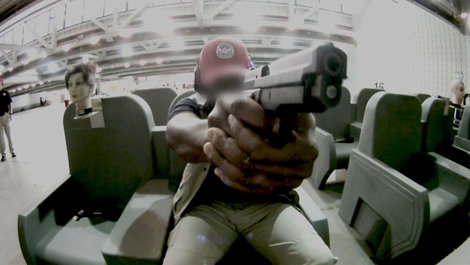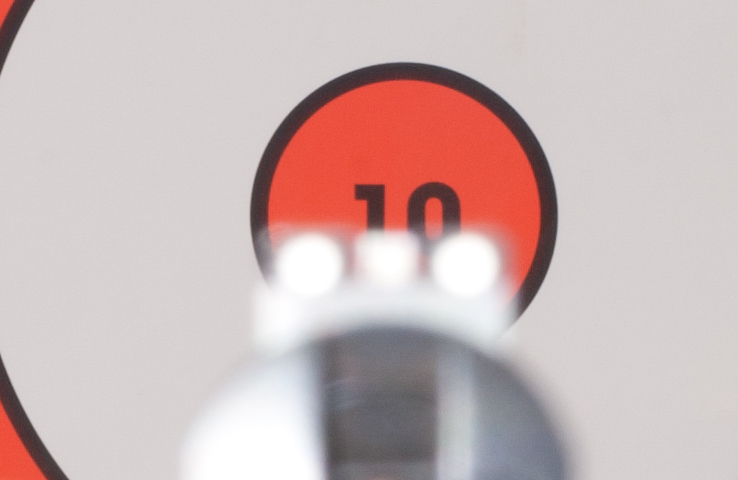
Institutional Inertia – Never Accept Average
How law enforcement snipers can avoid the dreaded ‘Institutional Inertia’ that often slows progress at agencies.
As I travel around the nation providing instruction to various law enforcement agencies, I see a consistent trend that greatly inhibits growth and development in the areas of training and equipment.
That trend is a lack of time, money and resources related to sustainment training, and identifying advancements in equipment and tactics.
A man far wiser than I once told me that the three critical assets needed to accomplish tasks were time, money and resources. He continued on by saying that if you’ve got all three at your disposal, tasks get completed quickly and, for the most part, effectively.
However, if you’re lacking in one, then you’d better have
a lot of the other two to make up for the deficiency. That makes sense, but what happens when you don’t have a whole lot of any of the three? This is what most agencies are up against, and it’s an uphill battle.
As a result, what usually happens is acceptance that this is the way it is, and the way it’s always going to be. Let’s call it what it is: institutional inertia. It’s an uncomfortable topic to discuss.

It’s stagnation, it’s a lack of progress, and the results can be deadly in this line of work. Is there a way to get your big boat turned? Absolutely, but in order to turn a big boat, pressure needs to be applied in specific places, and it takes patience and time.
Learning where and how to apply that pressure is critical to making gains and removing your team from the grips of institutional inertia.
As a young sniper I quickly learned that gaining the trust of your leadership is critical to opening the doors to new opportunity. If you want work for your team, your command structure needs to have complete trust and confidence in your abilities.

How do we establish that confidence? It starts with effective communication skills, and creating awareness of deficiencies. Make an effort to deliver solutions to problems rather than simply highlighting problems.
That simple act can go a long way, and presenting multiple courses of action to solve one problem shows that you’re open to suggestions.

I’ve also had a lot of success by inviting leadership to training events. The intent here is to create awareness through illustrating what you do, and what you may be up against when it comes to time, resources and money. Maybe you’re trying to convince your department that you need an infrared illumination capability to augment your current night vision assets and you’re getting push back because of cost.
Reach out to an IR laser company to get a test and evaluation unit, and set up a night shoot for your leadership to see the undeniable pros and cons of positive target identification with that IR asset.
How do you sell it? That’s easy; who doesn’t want to shoot a sniper rifle with night vision and lasers? This is just one example of an attempt to get your leadership engaged with what you do.

Good relationships with your leadership generally equal positive results. Another trend I see is a lack of progression with equipment. The world of precision rifles, optics and other support equipment has literally exploded with innovation in the last 10 years. With that comes a wide variety of solutions that aren’t necessarily associated with a high cost.
Still shooting that tired old Remington M700 PSS that your department bought 10, maybe 15 years ago? Tired of using foam and duct tape to build up a cheek piece that’s inconsistent and unstable? Can’t mount an in-line night vision optic to your rifle? There are plenty of cost-effective stock replacement options out there that will solve those problems.
I’m honestly blown away when this topic comes up in class and only a handful of students are aware of these advancements. The only way you’re going to stay abreast of these advancements is to take the initiative and do the research. With the information age being a way of life, there’s no excuse to not be current with equipment advancements within your discipline.
We don’t always have to do more with less. Let’s say you’ve taken the initiative and educated yourself on the current state-of-the-art as it relates to equipment, tactics, techniques and procedures. You’ve carefully and artfully developed your sales pitch for some more training time and updated equipment.

You’ve outlined solutions before highlighting the problems. You make your pitch, and it’s answered with “Why do we need this? We’ve always been able to make it happen with what we’ve already got. It’s good enough.” It’s incredibly frustrating, and like mentioned above, it’s institutional inertia at work.
Change is scary, change is resisted, and change takes time. How can we find a chink in that armor? A lot of this comes from education and using as many resources as possible to solidify your position. As an example, I always ask my students if they’ve ever heard of the American Sniper Association’s Police Sniper Utilization Report.
Surprisingly only a small percentage of hands go up, and quite frankly, I see that as completely unsatisfactory.
The data in that document alone can be enough to support your position and get your leadership to see merit in your request. Seeing a trend here?
Initiative and education are powerful tools, and they both go a long way to building credibility and defeating institutional inertia. I wish I had all the space necessary to touch on all the topics that law enforcement snipers need to address.
There are so many small things that contribute to the overall preparedness of a law enforcement sniper, and for some, you may be fighting an uphill battle. My intent with this article was to provide some insight and tools for those in need, and to get the creative juices flowing so you can hopefully invoke some positive change.

Snipers are selected based on certain personality traits. Intelligent, intellectual, creative, resourceful and passionate are just a few that come to mind. If you’re one of the many who are plagued with some of the problems mentioned above and want to invoke positive change, be humble, take the initiative, educate yourself, use every available resource, and be relentless in your pursuit. Never accept average.
Editor’s note: Author Caylen Wojcik is the owner/founder of Kalinski Consulting & Training Services, which specializes in providing precision shooting instruction to law enforcement and military professionals. To learn more, please visit kalinskiconsutling.com.



